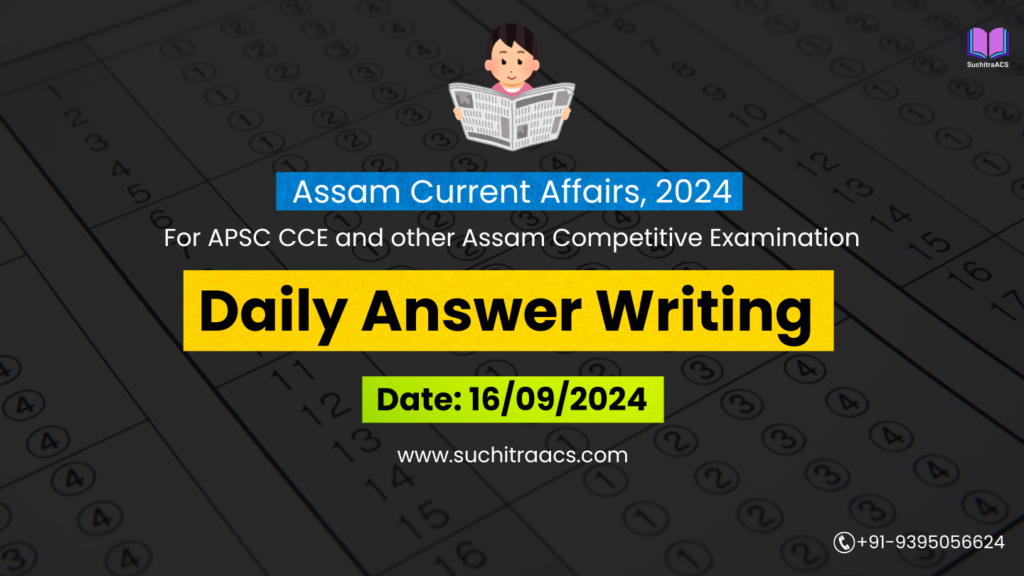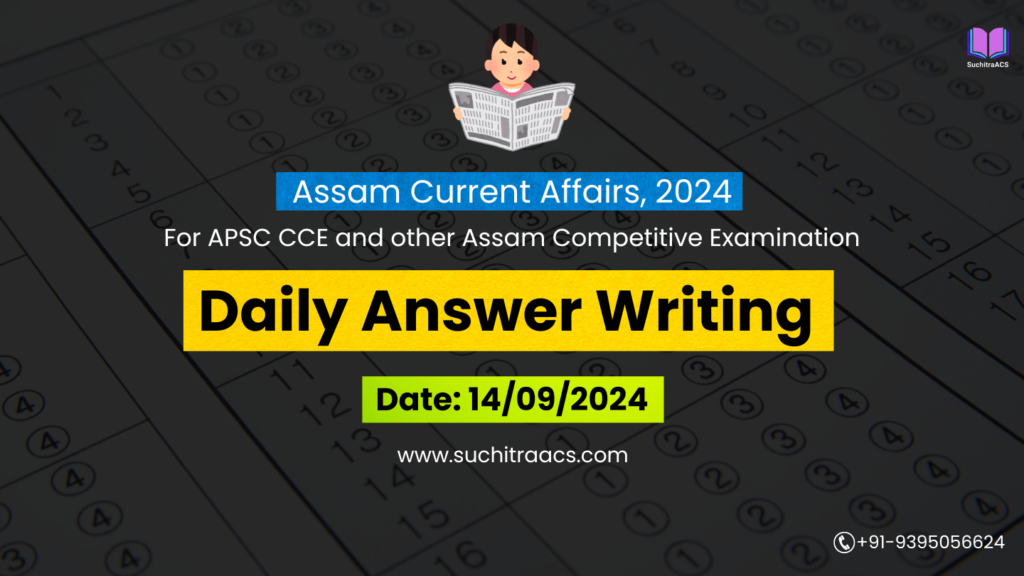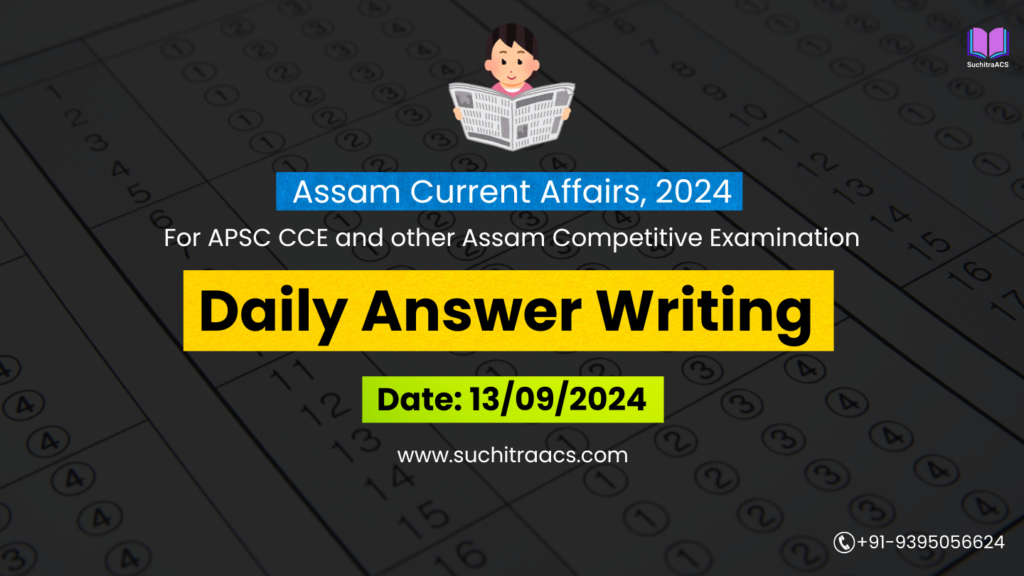APSC Answer Writing (Daily) based on Assam Tribune – 19/11/2024
For APSC CCE and other Assam Competitive examinations aspirants, practicing Daily Answer Writing is vital. This blog covers the most important Main question and its model Answer from the Assam Tribune today (19-11-2024).
Question:
Ethnic conflicts in one state often have spillover effects in neighboring regions, posing challenges to internal security and governance. Examine the role of law enforcement in preventing such spillovers, using the Assam-Manipur situation as a case study. Discuss strategies to address these challenges while ensuring peace and stability.
Model Answer
Introduction:
Ethnic conflicts in one region often ripple into neighboring areas, as seen with the ongoing violence in Manipur, which has raised internal security concerns in Assam. Such spillovers challenge governance, disrupt social harmony, and strain law enforcement. Effective measures are crucial to maintain peace and stability while addressing the root causes of conflicts.
Role of Law Enforcement in Preventing Spillovers:
- Border Surveillance:
Assam Police has intensified patrols along the Assam-Manipur border to monitor cross-border movements and prevent illegal entry of miscreants. - Intelligence Gathering:
Collecting actionable intelligence on potential unrest or inflammatory activities is key to preempting violence. - Community Policing:
Building trust through regular interaction with communities helps law enforcement address local grievances and mitigate tensions. - Neutralizing Misinformation:
Assam Police has countered attempts to incite tensions by monitoring social media and curbing the spread of inflammatory content. - Collaboration with Manipur Authorities:
Coordination between Assam and Manipur law enforcement agencies ensures effective response to cross-border threats.
Challenges in Addressing Spillovers:
- Porous Borders: Difficult terrain complicates monitoring efforts, allowing miscreants to cross undetected.
- Resource Constraints: Prolonged operations require significant manpower and funding.
- Inter-Community Tensions: Historical mistrust between ethnic groups hinders reconciliation.
- Spread of Misinformation: Social media amplifies rumors, fueling tensions.
- Coordination Issues: Differences in priorities between states delay unified action.
Strategies to Ensure Peace and Stability:
- Technological Integration:
Use drones, surveillance cameras, and AI tools to monitor border areas effectively. - Enhanced Intelligence Sharing:
Establish inter-state mechanisms for real-time exchange of intelligence. - Stakeholder Engagement:
Conduct dialogues involving community leaders, civil society, and local administrations to foster trust and address grievances. - Crisis Management Teams:
Deploy specialized rapid-response units trained in conflict de-escalation and riot control. - Strengthening Socioeconomic Development:
Address underlying causes of conflict by improving infrastructure, education, and employment opportunities in affected areas.
Conclusion:
The Assam-Manipur situation highlights the critical role of law enforcement in maintaining internal security amidst ethnic conflicts. A proactive and collaborative approach, supported by technological advancements and community engagement, can effectively mitigate spillover effects and ensure peace and stability in the region.
✨ Looking for top-quality APSC Mains Guidance with Personalised Mentor?

🔔 Join Our WhatsApp Study Group!
For exclusive access to premium quality content, including study materials, current affairs, MCQs, and model answers for APSC CCE and other Assam competitive exams.
Click here to join: SuchitraACS Study WhatsApp Group
📚 Want to know more about SuchitraACS’s most affordable courses?
Click here to know more: SuchitraACS Courses for APSC CCE and Assam Competitive Examinations




